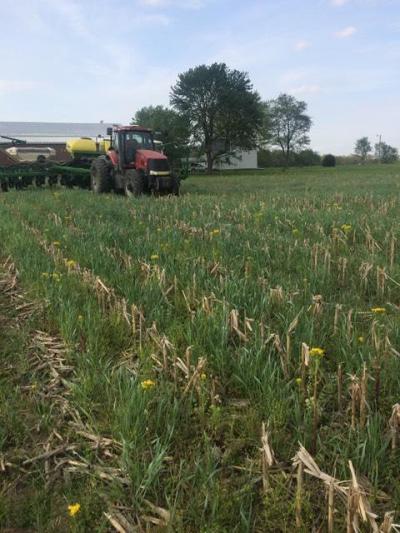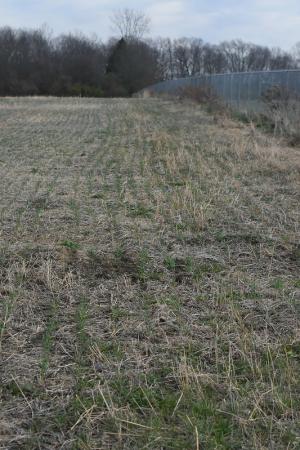Conservation Cropping Systems Initiative, via Flickr.
What's Working for Conservation
Cover Crops
2021 Information
Cover crops are crops that grow outside of the summer growing season for row crops, thus keeping the ground covered with living plants for a much longer period each year. Cover crops take advantage of spring and fall growing seasons, retain excess nutrients in the field, and reduce fall and spring erosion. They may be hayed or grazed, increasing livestock production profit, but the primary purpose is to protect and build soil. Having a living root in the soil year-round is important for healthy soil because roots release simple carbon compounds that boost microbial activity and growth. When you only grow summer annuals like corn and soybeans, microbes are starved for fresh food for many months of the year.
The most common cover crop in Minnesota is winter cereal rye, as it’s hardy enough to be planted late in the fall, survive the winter, and grow in the first warm days of spring. Usually it’s terminated with herbicide prior to cash crop planting. In organic systems, a roller-crimper or tillage is used to kill the rye and make way for corn or soybean planting. Rye is known to be especially good at taking up soil nitrogen in the fall, which prevents the nitrogen from being lost to ground or surface water. Instead, the nitrogen in the rye biomass eventually decomposes in place and can be taken up by future crops.
There are a lot of questions to answer as you get going with cover crops. Producers starting out should make sure to work with their business partners, agronomists, advisors, and lenders so that everyone invested in the farm has clear expectations. To minimize risk, select a species tolerant of most residual herbicides, like cereal rye. Make a plan and a backup plan for how to plant and terminate your cover crop, as well as accomplish your other field operations like fertilization and herbicide applications. Look for a custom operator or airplane seeder to do the planting if you need specialized equipment. Check with your local Soil and Water Conservation district for information on state and federal cost-share for cover cropping. It might take a year or two to gain experience with cover crops and cost-share can ease the financial risk.
Conservation Cropping Systems Initiative, via Flickr.
To learn more about different cover crops, you can start by exploring online decision tools from the NRCS, University of Minnesota, and the Midwest Cover Crops Council (MCCC). The MCCC’s Cover Crop Recipes describe low-risk approaches for beginning cover croppers. UMN and the NRCS also have partial budget tools that can help you consider various costs and benefits. A great way to learn more about managing cover crops is to talk with farmers during a field day, or one-on-one about their own experiences with cover crops. You can find mentors on farmmaps.umn.edu or with the Minnesota Soil Health Coalition.


